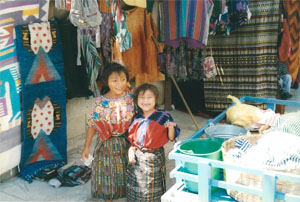Latin America and the Caribbean

ORNL has been heavily involved in energy and environmental programs in this region since 1984, beginning with energy strategy assistance to Haiti. Later in the 1980s, the Laboratory was involved in renewable energy assessments in Mexico and the Dominican Republic, including carrying out an influential evaluation of the first successful application of PV energy systems for rural electrification in the DR; in project evaluations and assistance in Ecuador and Peru; in professional interactions with Brazil and Chile; and in providing project monitoring and evaluation assistance to a major multiyear USAID rural electrification project in Central America.
In the 1990s, ORNL was involved in environmental program leadership in Guatemala and Panama and has also been involved in program design activities for USAID in Brazil, Haiti, the Dominican Republic, and Central America, along with power system assistance to USAID/Bolivia in collaboration with NRECA. The Laboratory has a number of key staff members fluent in Spanish.
National Palace & Main Plaza, Guatemala City
The largest of these projects was in Guatemala, where from 1991 through 2000 ORNL had a full-time person resident in Guatemala City, managing and supporting USAID's eight-year, $50 million Maya Biosphere Project (MBP), which won a number of awards within USAID for its effectiveness. In the period 1996-2000, ORNL's activities were expanded to include leadership of an initiative to strengthen the institutional infrastructure in Guatemala for environmental policymaking and policy implementation. As a part of this effort, ORNL led an assessment of environmental implications of energy development (especially petroleum exploration and development) in Guatemala, aimed at informing policy and regulatory initiatives by GOG; we also assisted CONAMA (Guatemala's equivalent of the US EPA) in preparing a climate change action plan. Related to both climate change and energy expertise, in 1999 - when the Central American countries were invited to a Hemispheric Summit on energy by DOE Secretary Richardson, organized in part to put pressure on Latin American partners to ratify the Kyoto Protocol -- ORNL was invited and supported by USAID to conduct a one-day workshop on climate change issues for the first-ever joint meeting of the energy and environmental ministers of the Central American countries. That meeting was highly successful in preparing the Central American countries for the summit, where they stood out in their knowledge of the issues, and in working toward a U.S. policy for assistance to the region that has been confirmed by Secretary of State Powell in several meetings with CONCAUSA.
During this same period, ORNL was asked by the U.S. government to establish a technical collaboration with a Brazilian counterpart to consider issues related to the UNFCCC Clean Development Mechanism (CDM), related to discussions to be held at COP-4 in Buenos Aires in 1998. The Laboratory also had a staff member on long-term assignment to USAID in Panama, managing environmental programs related to the transition to Panamanian control of the Panama Canal watershed; we assisted USAID in scoping its post Hurricane Mitch recovery program; we developed USAID/DR's new energy and environmental program objectives; we assisted USAID/Haiti in scoping an energy-for-development project component; and we did analyses of deforestation issues in Brazil and biodiversity and private power issues in Costa Rica.

In 2001, ORNL was asked by USAID's Mission to Jamaica and Caribbean Regional Programs (USAID/J-CAR) to design and lead a new energy project initiative in the Eastern Caribbean, focused on building local and regional capacities to make sound clean energy decisions as well as looking for opportunities for energy sector development to contribute to national and regional economies. Through 2004, this project assisted in the development of a Renewable Energy Centre in Barbados as a regional center of excellence in renewable energy and energy efficient technologies and policies.
In addition, as one part of the U.S. implementation of the CONCAUSA agreements, ORNL's Center for Regional Climate Modeling and Assessment is assisting Central American countries in developing capacities to carry out climate change modeling for the region, with support from USAID.Although most of ORNL's activities in Latin America and the Caribbean have been supported by USAID, the Laboratory made an important contribution to DOE by leading the Department's Western Hemisphere Energy Strategy Study in 1988-1990. That study examined energy conditions in the hemisphere, looking forward to the next decade in forecasting issues for U.S.policy and suggesting strategies to address them. According to David Pumphrey, then in charge of American Affairs for PI and currently DAS for International Energy Cooperation, that study had the highest success rate in its predictions of the future of any study ever commissioned by DOE/PI.
